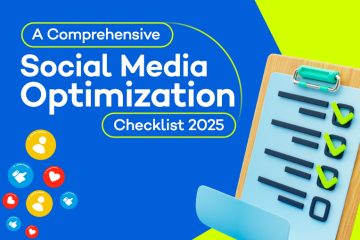In the world of online advertising, getting your ad seen is only half the battle. The real goal is to get people to click. After all, what’s the point of paying for visibility if you’re not driving traffic to your website? This is where CTR in Google Ads comes into play.
Click-Through Rate (CTR) is one of the most telling metrics in Google Ads. It shows how effective your ad is at attracting clicks compared to how often it’s shown. A high CTR typically means that your ad is relevant and resonates with your audience, while a low CTR can signal that something needs adjusting.
In this blog, we’ll break down what is CTR in Google Ads, why it’s so important for your ROI, and how you can improve it to boost your campaign results. Let’s dive into the details and help you turn clicks into conversions.
Understanding CTR in Google Ads
Before diving into how CTR affects your ROI, let’s first break down what CTR in Google Ads actually means and why it’s such an important metric for your campaigns.
What is CTR in Google Ads?
Click-Through Rate (CTR) is a metric used to measure the effectiveness of your ads. It represents the percentage of people who click on your ad after seeing it. In simple terms, it tells you how many people found your ad relevant enough to take action.
The formula to calculate CTR is simple:
Where:
-
Total Clicks is the number of times people clicked on your ad.
-
Total Impressions is the number of times your ad was shown to users.
For example, if your ad was shown 1,000 times and received 50 clicks, your CTR would be:
Why is CTR Important for Google Ads?
CTR is crucial because it gives you insight into how well your ad resonates with your target audience. A higher CTR usually indicates that your ad is compelling, relevant, and likely to lead to conversions. Google also rewards ads with higher CTRs by lowering the cost per click (CPC), meaning you get more clicks for your budget.
Moreover, CTR is a key component of Google’s Quality Score, which directly influences how often and where your ads appear in search results. A higher CTR can lead to a higher Quality Score, which in turn improves your ad position and reduces your cost per click.
How CTR Affects Your ROI in Google Ads
Now that we have a clear understanding of what CTR in Google Ads is, let’s explore how this metric directly impacts your return on investment (ROI).
1. Higher CTR Leads to Lower Cost Per Click (CPC)
One of the most significant ways that CTR impacts ROI is through the relationship between CTR and Cost Per Click (CPC). When your ad has a higher CTR, Google sees it as more relevant and rewarding to users. As a result, Google tends to lower your CPC, allowing you to get more clicks for the same budget.
Lower CPC means you can generate more traffic without increasing your ad spend, which leads to a better ROI. For example, if you’re paying less per click, you can run your ads longer or target more keywords, increasing your exposure and potential conversions.
A well-executed CTR strategy can be complex, and many businesses find it helpful to work with a Google Ads agency. These agencies specialize in optimizing ad performance and can help improve CTR through targeted strategies and ongoing adjustments, ultimately boosting your ROI.
2. Increased Ad Position and Visibility
In Google Ads, ad position is influenced by your Quality Score, which is partially determined by your CTR. The better your CTR, the higher your Quality Score, which can result in better ad placement. Higher ad positions on the search engine results page (SERP) generally lead to more visibility and higher chances of getting clicked on.
With improved visibility, your ads are more likely to be seen by your target audience, increasing the chances of conversions and ultimately improving your ROI.
3. Better Conversion Rates
CTR is not just a measure of how many people clicked on your ad; it’s also an indicator of how well your ad is aligned with your audience’s needs and search intent. Ads with a high CTR usually mean that your messaging is on-point, leading users to engage with your landing page.
When your landing page is optimized for conversions, a higher CTR can translate into better conversion rates, resulting in higher sales and improved ROI. Essentially, a well-optimized ad not only drives clicks but also motivates users to complete your desired actions whether that’s making a purchase, filling out a form, or signing up for a service.
4. More Data for Optimization
A high CTR gives you more data to analyze, which can help you optimize your Google Ads campaigns for better performance. With more clicks, you can test different variations of your ads, keywords, and landing pages to find the best combination that drives the most conversions at the lowest cost.
The more data you have, the more informed decisions you can make, ultimately improving your ROI over time.
How to Improve CTR in Google Ads
Improving your CTR can have a profound impact on the success of your Google Ads campaigns and ROI. While there’s no one-size-fits-all solution, there are several best practices that can help you increase your CTR and drive more profitable results.
1. Optimize Your Ad Copy
Your ad copy is often the first impression potential customers will have of your business. It’s important to craft compelling, clear, and relevant ad copy that resonates with your target audience. Here are a few tips to optimize your ad copy:
-
Use Strong Calls-to-Action (CTAs): Encourage users to take action by using clear and direct CTAs, like “Shop Now,” “Get a Free Quote,” or “Learn More.”
-
Include Your Target Keywords: Incorporating your target keywords into the ad copy makes it more relevant to the user’s search query, increasing the likelihood of them clicking.
-
Highlight Unique Selling Points (USPs): What makes your business stand out? Whether it’s free shipping, a limited-time offer, or a specific feature, emphasize it in your ad to attract attention.
2. Refine Your Targeting
The more relevant your ads are to the audience, the more likely they are to click. Refined targeting helps ensure your ads are shown to the right people. You can improve targeting by:
-
Using Keyword Match Types: Broad match, phrase match, and exact match all have different levels of reach and relevance. Experiment with different match types to find the right balance.
-
Location and Demographic Targeting: If your business serves a specific region or demographic, be sure to tailor your ads to reach those users. For instance, targeting users in specific cities or with particular interests can help boost CTR.
-
Use Negative Keywords: Negative keywords prevent your ads from showing up for irrelevant searches, ensuring your ad is only seen by people who are genuinely interested.
3. Improve Your Landing Page Experience
Even if your ad has a high CTR, a poor landing page experience can hurt your conversion rates. If users click on your ad but don’t find what they’re expecting, they may bounce, which ultimately impacts your ROI. To ensure your landing page aligns with your ad:
-
Match Your Ad and Landing Page Content: Ensure that the message and offer in your ad are reflected on the landing page. This creates a smooth user experience and increases the chances of conversions.
-
Optimize for Speed: A slow-loading landing page can cause potential customers to leave before even seeing your content. Make sure your landing pages are fast and mobile-friendly.
-
Simplify the Design: A cluttered or confusing landing page can drive users away. Keep the design clean, and focus on the main conversion goals, whether it’s filling out a form or making a purchase.
4. Use Ad Extensions
Ad extensions provide additional information alongside your standard ad copy, such as links to specific pages, your phone number, or additional business details. This extra information makes your ad more useful to the user, increasing the likelihood that they will click.
-
Sitelink Extensions: Direct users to specific pages on your site (e.g., a product page, contact page, or special offers page).
-
Call Extensions: Include your business phone number, allowing users to call directly from the ad.
-
Location Extensions: If you have a physical store, include your location to attract nearby customers.
Using ad extensions effectively can increase your ad’s visibility and improve your CTR.
5. A/B Testing Your Ads
Testing is a continuous process that allows you to improve your ads over time. A/B testing lets you compare different ad variations to see which performs best. Test variations in:
-
Ad headlines and descriptions
-
CTA buttons and copy
-
Keyword targeting
-
Landing page elements
By constantly testing and tweaking your ads, you can gradually improve your CTR and ROI.
Conclusion
Understanding what CTR in Google Ads is and how it impacts your ROI is essential for running successful ad campaigns. A high CTR indicates that your ads are effectively engaging your audience, leading to more clicks, better ad positioning, and ultimately, higher conversions. By optimizing your ad copy, refining your targeting, improving your landing page experience, and utilizing ad extensions, you can significantly boost your CTR and, in turn, maximize your return on investment.
As a digital marketing agency in Delhi, we know that each business has unique needs, and achieving the highest ROI from Google Ads requires a tailored approach. Improving your CTR is one of the most effective ways to lower costs, drive more traffic, and increase your sales.
Now that you have a deeper understanding of CTR, it’s time to take action and optimize your campaigns. By applying the strategies discussed in this blog, you’ll be well on your way to achieving a higher CTR and a better ROI. With the right approach, your Google Ads can become a powerful tool for driving growth and achieving business success.





0 Comments